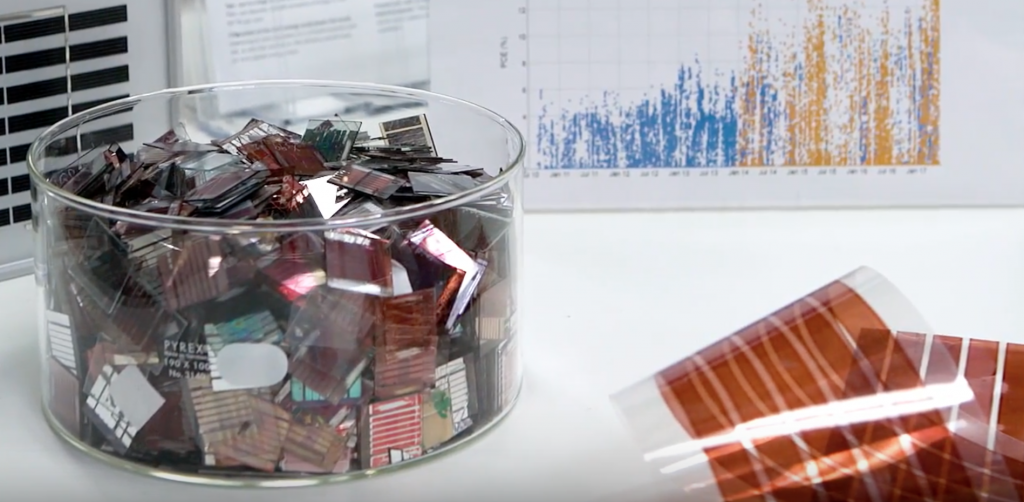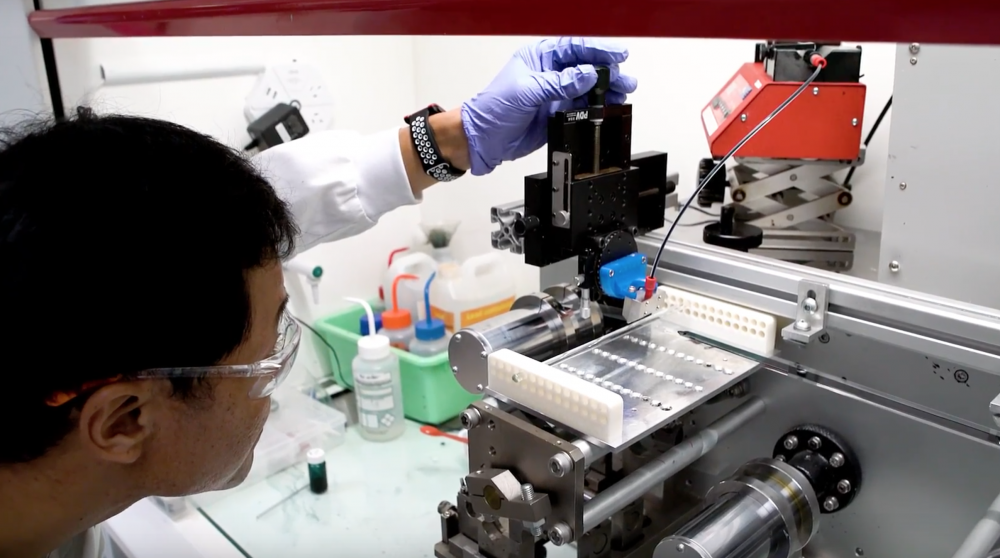The secret to a truly ‘noteworthy’ solar cell, brought to you by CSIRO
Conventional silicon solar panels are great, but they’re not particularly lightweight or portable.

And while solar arrays on Aussie rooftops are a magnificent sight, they don’t always match the style of heritage-listed or architecturally significant buildings.
That’s where CSIRO’s Flexible Electronics Laboratory comes in. Based in Melbourne, the small research lab is investigating how to mass-produce lightweight, efficient solar panels by printing them on flexible plastic films.
Printing a solar cell
CSIRO acts as a bridge between academic scientists and manufacturers by taking lab-scale breakthroughs from other research groups and exploring ways to manufacture them at a larger scale.
For the past ten years, the lab has been working on printed solar films – a focus inspired by a previous CSIRO innovation.
“It’s more or less the same process that is used to print plastic banknotes,” says CSIRO Manufacturing Group Leader Dr Fiona Scholes.”CSIRO played a key role in that, and the seed for working on solar films within CSIRO came from researchers that had worked on those banknotes in the past. We were able to take that pool of expertise and use it for something else.”
The solar printing process uses a large roll of PET plastic, the same stuff that makes up soft drink bottles. The thin film is fed back and forth through a printing machine, which puts down multiple layers of photovoltaic ink – often an organic compound based on carbon and hydrogen.

Enter perovskites
Unfortunately, organic solar inks just aren’t very efficient compared to tried and trusted silicon. But the latest advances in perovskites have the potential to completely revolutionise the capabilities of printed solar cells.
Cheap, efficient and easy to produce, perovskites are a new type of material that has been touted as the next big thing in solar. And thanks to a $3.3 million grant as part of ARENA’s $29.22 million Solar R&D funding round, CSIRO is planning to develop printed perovskite solar modules that manufacturers will want to invest in.
“The main aim is to take those scientific breakthroughs in perovskites and make them mass-producible,” Dr Scholes says. “We’ll be looking for a robust perovskite formulation that can handle the demands of manufacturing conditions.”
By April 2021, CSIRO will have a formula and production process for stable, efficient printed perovskite cells that they can start shopping around to the industry – preferably to home-grown Aussie enterprises.
“We would love to see the outcomes of our research and the research of our colleagues end up in the hands of Australian manufacturers,” Dr Scholes says. “We want Australia to play a part in delivering this fantastic new type of solar into global supply chains.”
Testing the technology
CSIRO has a huge advantage in the solar research space – it is also home to one of the world’s best solar PV testing facilities. “It can provide certified results for perovskites, which is not actually that straightforward because they are a little bit finicky. So to have that capability essentially in-house is fantastic,” Dr Scholes says.
READ MORE: HOW OUR SOLAR RESEARCHERS ARE LEADING THE WORLD
The lab’s printed cells are also subjected to outdoor testing in tough Australian conditions. “The durability of these types of cells over a long time period has yet to be fully proven because they have only been around for a decade,” Dr Scholes says. “Having said that, we’ve had stuff outside for three or four summers that is still going strong. The type of plastic you use for lamination is really important, but if you get that right then they can last for a really long time.”
Serious potential
The possibilities for flexible printed solar cells are enormous. “There’s lots of potential for deployment in emergency situations or remote locations where getting a heavy bank of silicon panels could be problematic,” Dr Scholes says. “There’s also potential in rooftop installations where the structure can’t accommodate traditional solar panels because they are too heavy or the aesthetics don’t match those of the building.”
The group is currently working with an industry partner to build a 100 square metre facility with printed solar film integrated into a Colorbond-style roof. These types of roofs are often used for large-scale structures that can’t have lots of columns underneath, such as indoor sports centres, big cattle yards and aviation hangars. Huge buildings like these are ideal for massive solar arrays, but their spanned roofs can’t support traditional silicon panels.
But Dr Scholes thinks that flexible solar cells could become a feature of a building’s architecture, rather than a rooftop afterthought. “You can use the form factor to your advantage,” she says. “We would love to see printed solar films used in really creative ways – on window furnishings, laminated onto skyscrapers or as really beautiful shade structures that generate electricity as well.”
This article was originally written by Simon Mitchell, Writer.
LIKE THIS STORY? SIGN UP TO OUR NEWSLETTER

ARENA